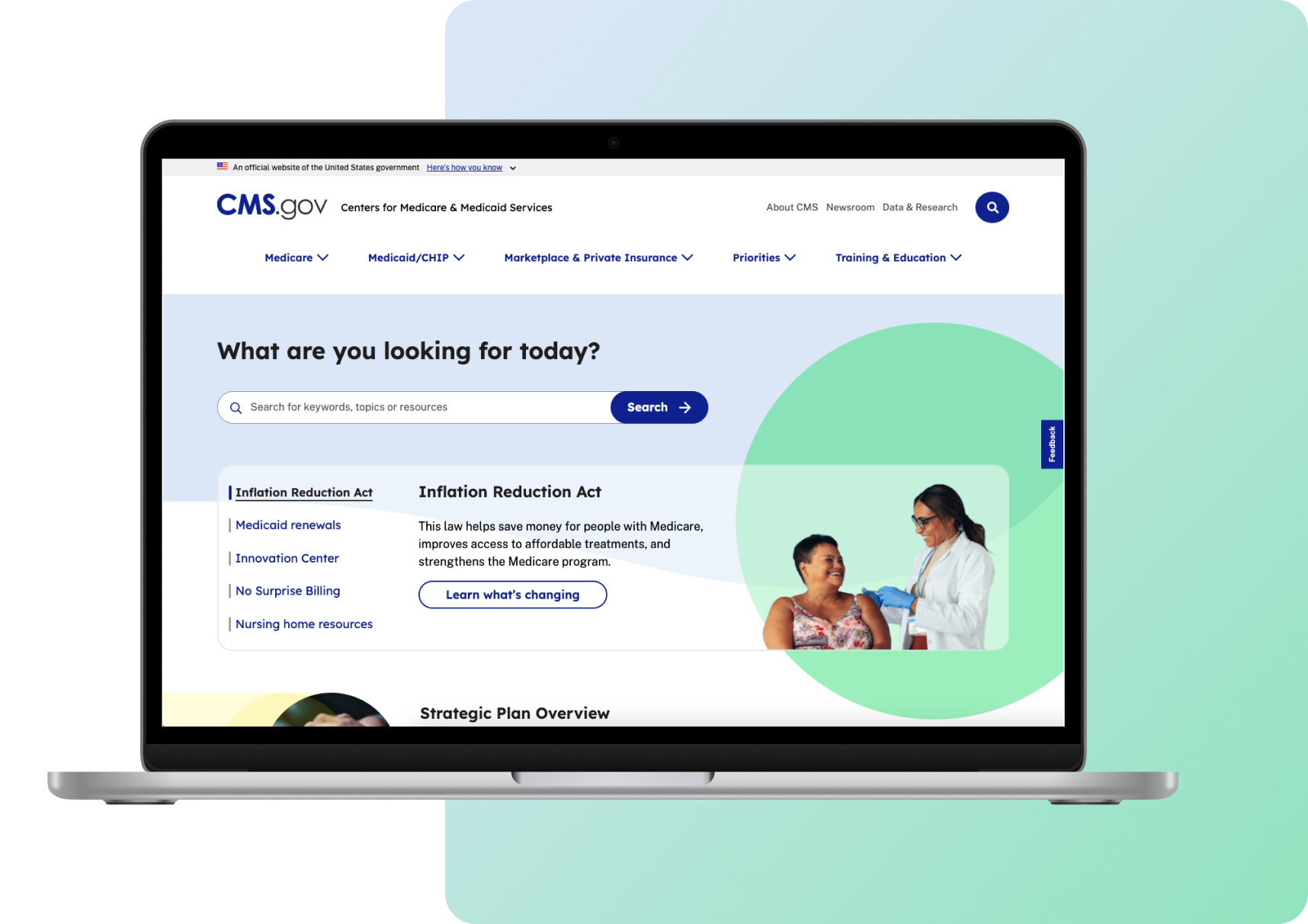Understanding Provider Needs to Improve CMS.gov
I participated in a year-long research project with CMS.gov stakeholders to learn more about how Medicare providers experience their content and how it can be optimized.
PROJECT OVERVIEW
The Centers for Medicare & Medicaid Service (CMS) engaged my agency to conduct research into PCG vehicles for communicating with Fee-for-Service (FFS) Medicare providers. This project consisted of:
A formative research phase to better understand target audiences and their specific needs
A summative evaluation phase to improve the quality and effectiveness of PCG webpages and communications products
I was the design lead for both phases, leading both the research and the creation of client deliverables that distilled our findings into actionable recommendations.
In-Depth Interviews with Medicare Providers
I conducted in-depth-interviews (IDIs) with over 30 Medicare providers across the United States to learn more about how CMS.gov serviced their needs and what pain points they encountered.
PROS
CMS.gov’s policy updates are easy to understand
Information is kept up to date, and updates are communicated via email to subscribers
CMS.gov is a reputable, highly regarded source for accurate information
CONS
There’s too much content to sift through
HCPCS codes for billing may differ per state, but CMS.gov sometimes doesn’t note this
OBJECTIVES / CONSTRAINTS
I worked with the ANA team to identify some project objectives and constraints for the new process:
Must be intuitive and quick to move through
Must have an easy-to-use mobile interface
Must allow for “un-merge” if the wrong accounts are merged
Must work with existing integrations
Must ensure no loss in user information
And some for the solution I was designing:
Must only use elements from their design system (no frontend UI enhancements)
Must result in a clickable prototype for additional user testing
IDEATION
I started mapping out the steps needed to complete the mergers (from both the user’s perspective and the system’s) to form a high-level framework for the process.
VALIDATION CRITERIA
ADDITIONAL INSIGHTS
From here, I worked with the ANA team to refine these steps further, including the criteria for identifying and validating duplicate accounts:
At login and at registration, the system would match the following information against the user’s account information:
First name
Last name
State of residence
If users select a duplicate account to merge, they must validate the following information from the account (account information will be partially shown)
Email address
Phone number
State of residence
Our conversations about validation criteria also uncovered a few other items to consider:
The option to save progress (in the event a user has multiple duplicate accounts to validate, which may take more time)
If a user sees the duplicate account’s partial information and realizes they selected the wrong account, they must be able to skip the account (if more than one duplicate account was chosen) or opt out completely (if only one duplicate account was selected).
VISUAL DESIGN
Once the workflow was reviewed and approved by the ANA team, I moved on to design. Since this project required me to only use existing design elements, I worked in high-fidelity design to create the pages needed.
REFINING THE PROCESS
I prepared a demonstration of the process for the ANA team to review, and they provided some additional feedback:
The team decided to hide the main navigation on process pages to guide users from start to finish (the ANA logo in the header would still take users to the homepage if they really wanted to exit).
They also decided to allow users to validate duplicate accounts via login (in case users didn’t have their login credentials at the time and needed to make a new account).
THE RESULTS
The prototype was delivered to ANA’s development team in March 2022 and implemented in August 2022. We followed up in February 2023 for a six-month follow-up discussion and discovered that:
New account registrations were down 30% from previous years (most new accounts belonged to newly certified nurses in 2022)
The account merge process had reduced the backlog by 40%, from 30k duplicate accounts to 18k remaining
The Customer Care team were able to enjoy their December holidays (woohoo!)
NEXT STEPS
The success of this project was a significant win for both ANA and my agency, and it helped us to win 2 new project bids to begin in 2024:
A full redesign of ANA’s primary site, nursingworld.com, and
An additional project to improve their SEO strategies and rethink the global taxonomy they use to connect diverse types of content together

